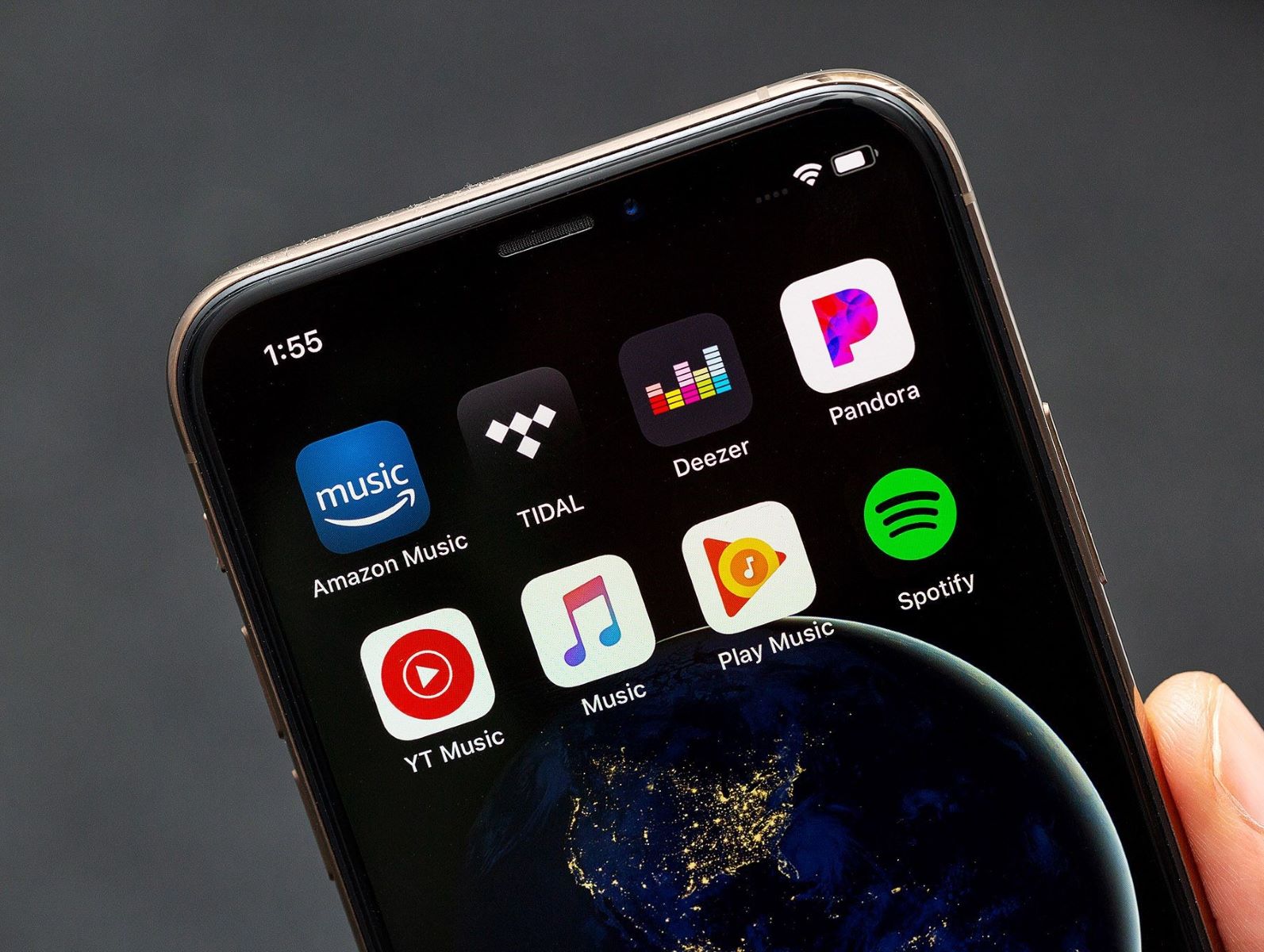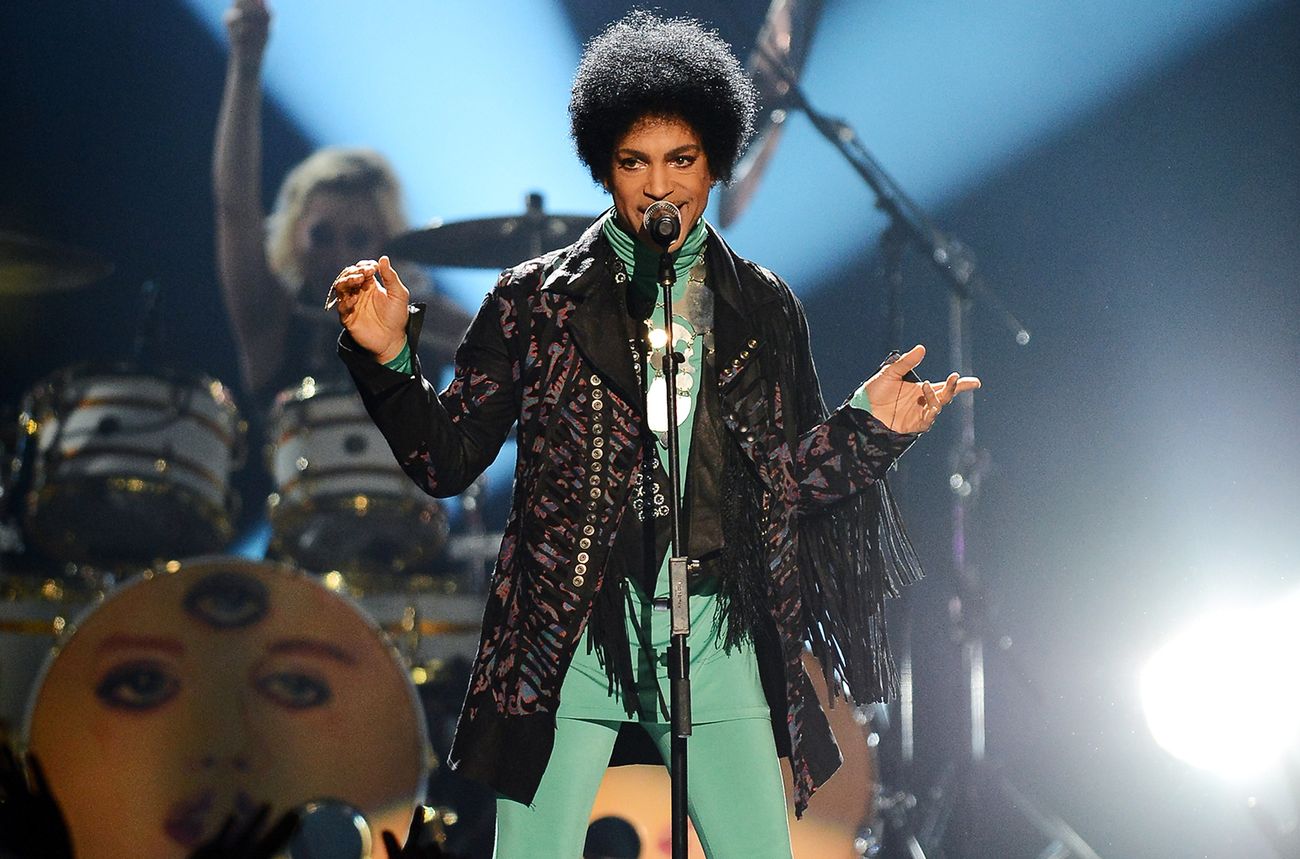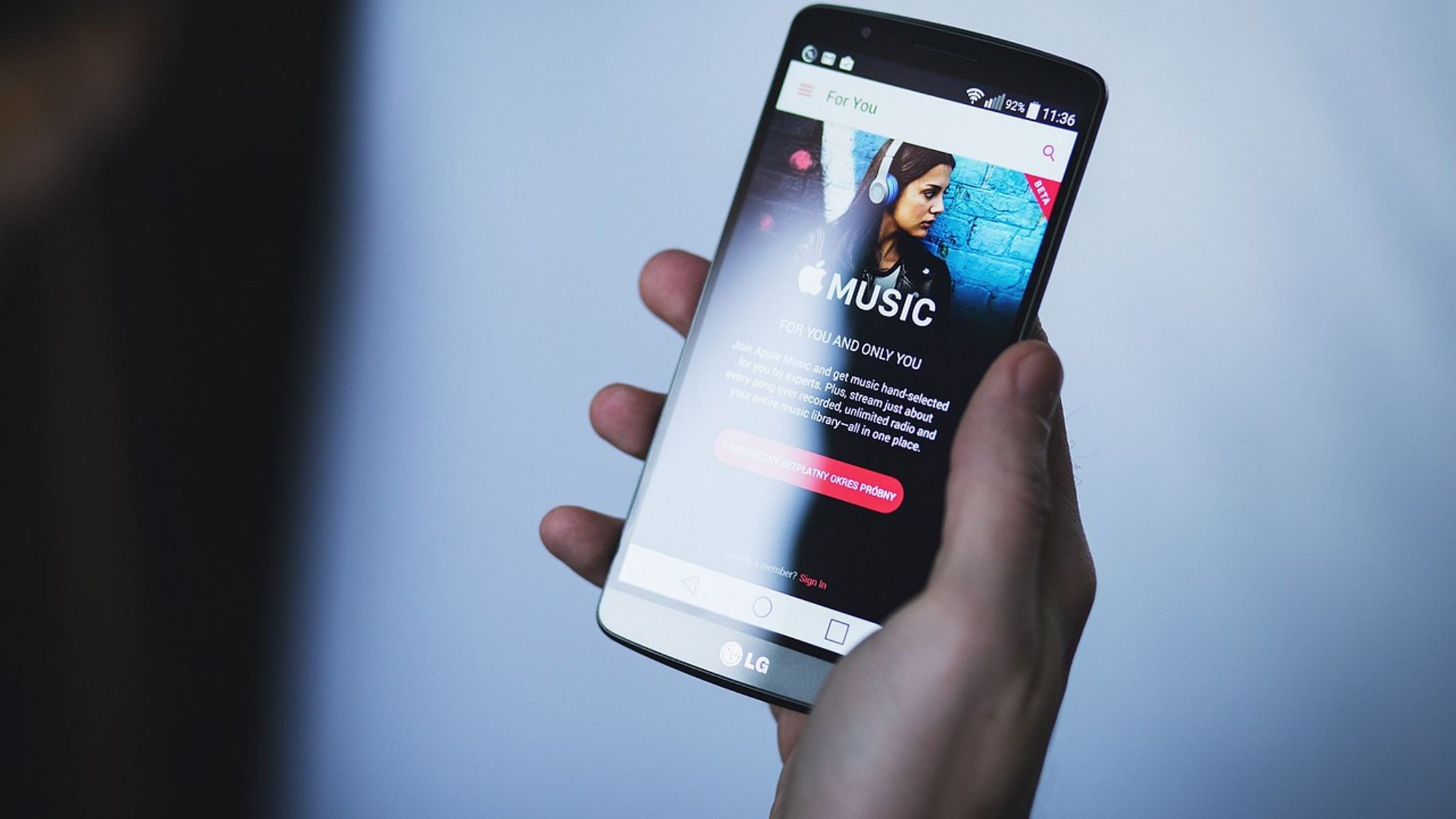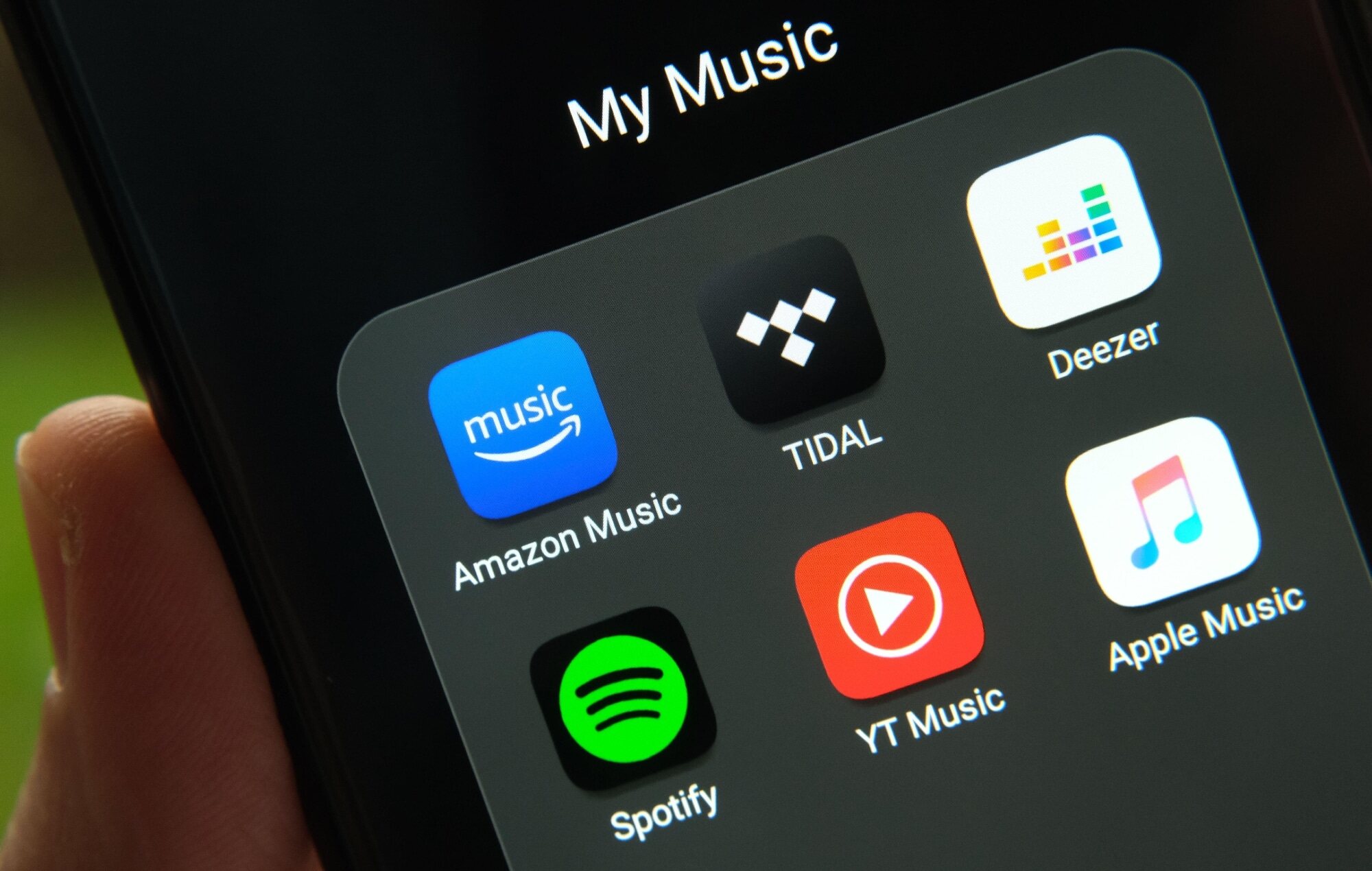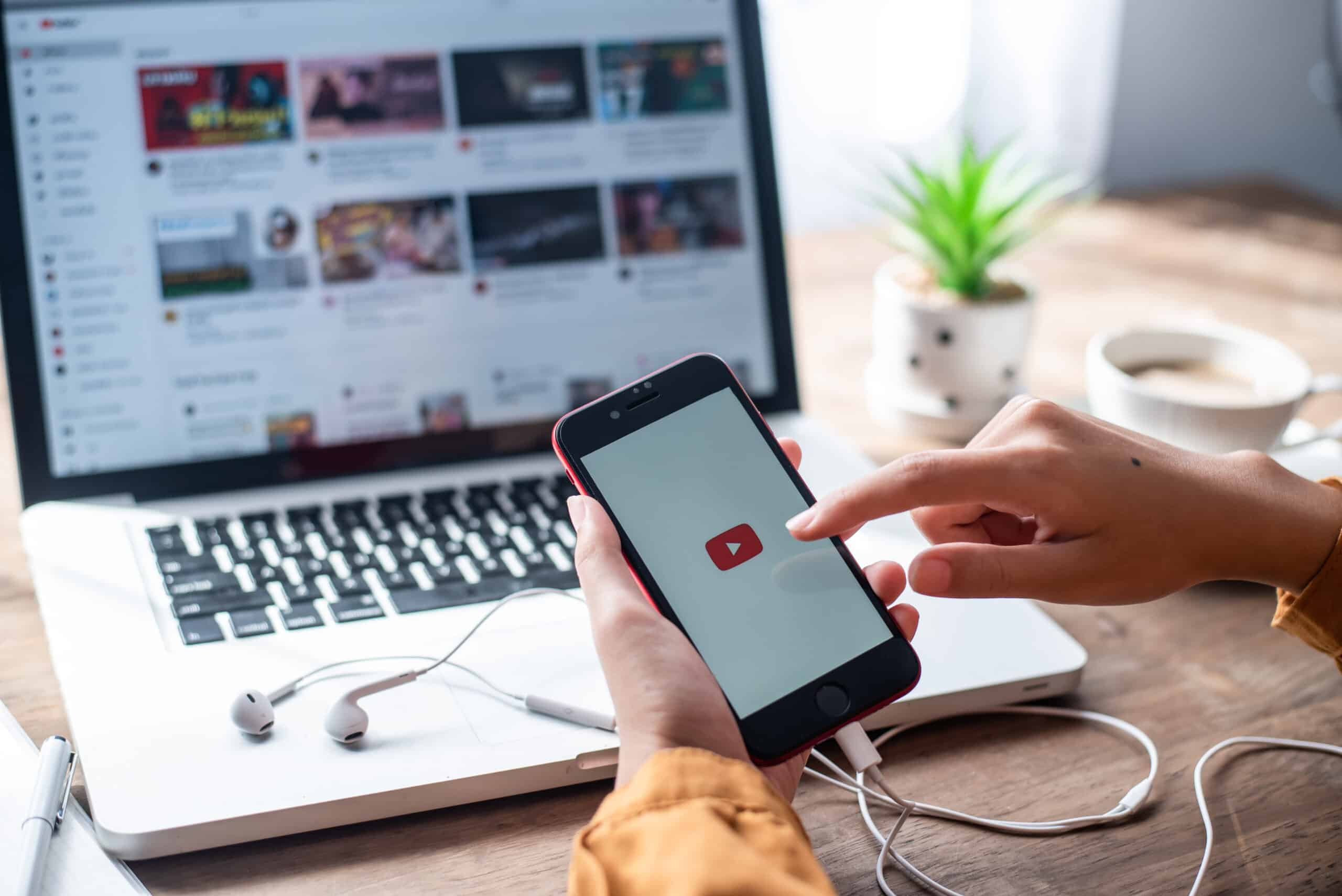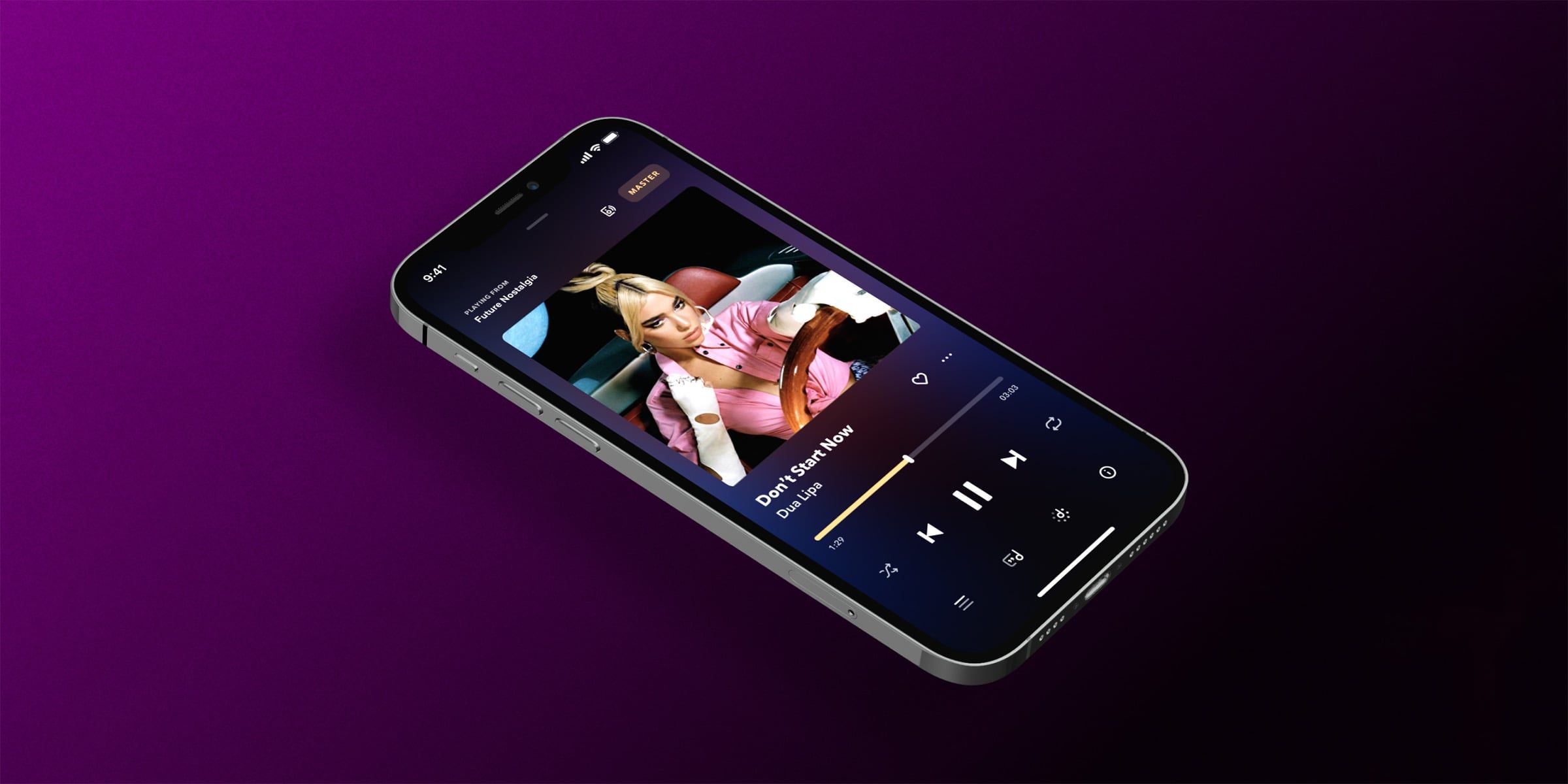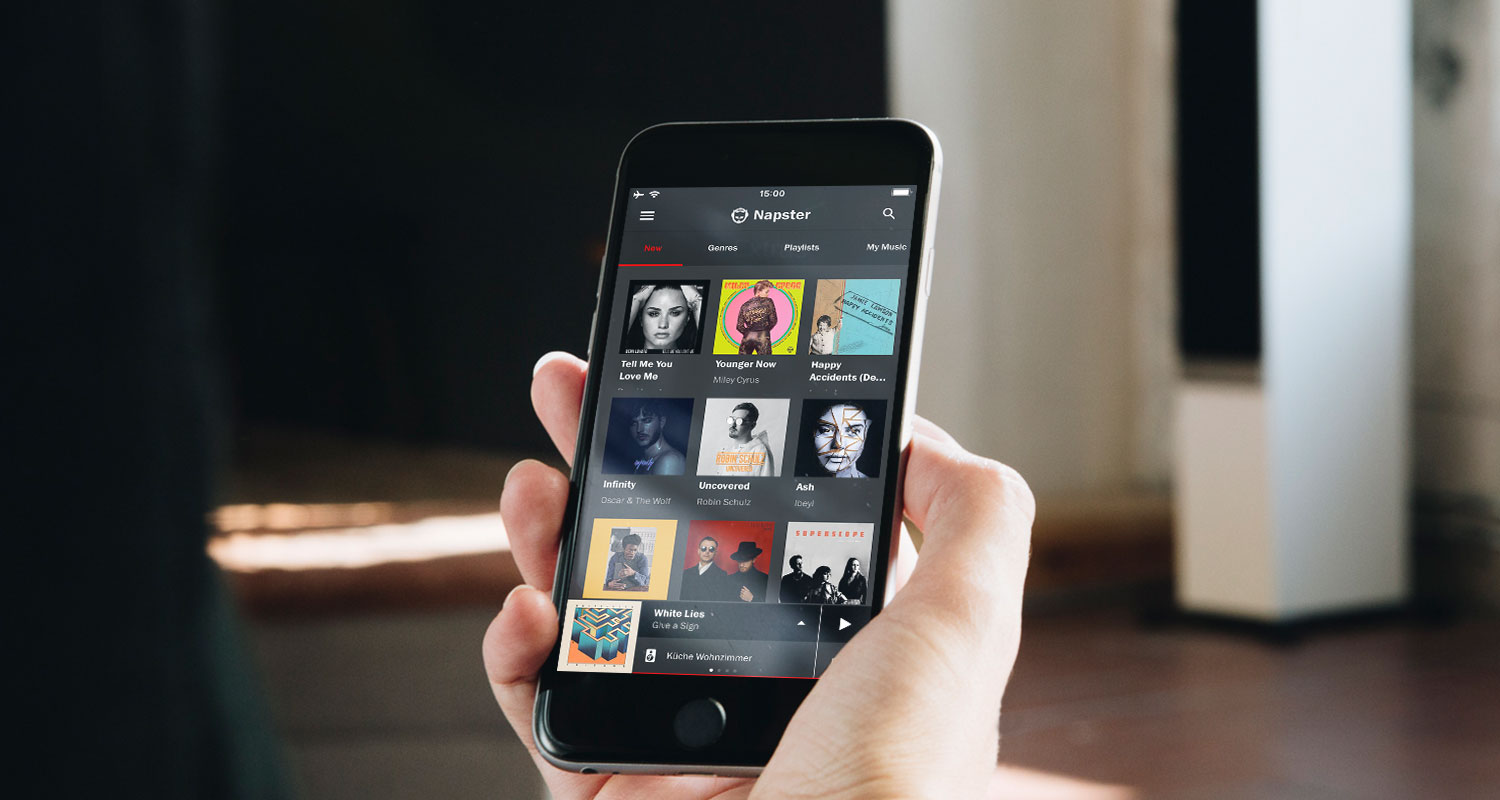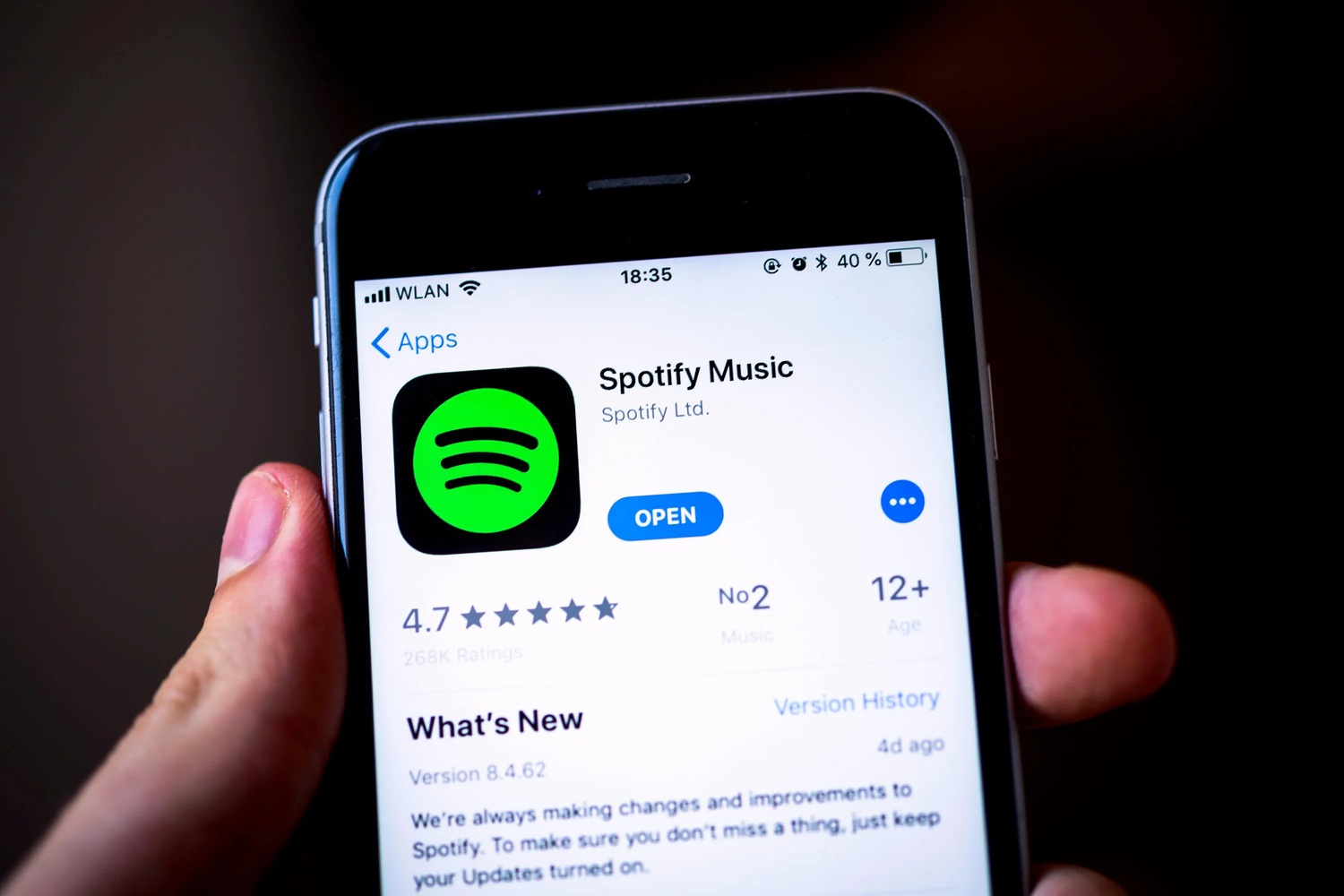Home>Devices & Equipment>Streaming>What Is Live Streaming Music


Streaming
What Is Live Streaming Music
Published: March 8, 2024
Discover the power of live streaming music and learn how it's revolutionizing the way we enjoy and share our favorite tunes. Explore the latest trends and technologies in music streaming today.
(Many of the links in this article redirect to a specific reviewed product. Your purchase of these products through affiliate links helps to generate commission for AudioLover.com, at no extra cost. Learn more)
Table of Contents
Introduction
In today's digital age, the way we consume music has undergone a remarkable transformation. Live streaming music has emerged as a revolutionary force, reshaping the music industry and the way artists connect with their audience. This dynamic medium has not only redefined the concept of live performances but has also opened up new avenues for music enthusiasts to experience their favorite artists in real-time, regardless of geographical boundaries.
Live streaming music allows artists to reach a global audience, transcending physical limitations and bringing people together through the universal language of music. It offers an immersive and interactive experience, enabling fans to engage with their favorite performers in a way that was previously unimaginable. Whether it's a solo acoustic set or a high-energy concert, live streaming music brings the electrifying atmosphere of a live performance directly to the screens of fans around the world.
As technology continues to advance, live streaming music has become increasingly accessible, empowering artists to showcase their talent and creativity without the constraints of traditional concert venues. This has not only democratized the music industry but has also provided a platform for emerging artists to gain exposure and build a dedicated fan base.
Moreover, the rise of live streaming music has redefined the concept of music events, offering a diverse range of experiences, from intimate studio sessions to large-scale music festivals, all within the virtual realm. This has not only expanded the possibilities for music enthusiasts to discover new artists and genres but has also fostered a sense of community and connection among fans who share a passion for live music.
In the following sections, we will delve deeper into the intricacies of live streaming music, exploring its history, technological aspects, popular platforms, as well as the benefits and challenges it presents. Additionally, we will examine the future trajectory of live streaming music and its potential to continue shaping the landscape of the music industry in the years to come.
Definition of Live Streaming Music
Live streaming music refers to the real-time transmission of audio content over the internet, allowing audiences to experience live performances, studio sessions, and music events from anywhere in the world. This innovative medium enables artists to connect with their fans in a direct and interactive manner, transcending physical boundaries and time zones. Unlike traditional music distribution methods, such as physical albums or digital downloads, live streaming music delivers an immersive and dynamic experience, capturing the electrifying essence of a live performance and bringing it directly to the screens of music enthusiasts.
Through live streaming music, artists have the ability to engage with their audience in a way that goes beyond the confines of a traditional concert venue. Whether it's a solo acoustic performance, an intimate studio session, or a large-scale music festival, live streaming music offers a diverse range of experiences, catering to a wide spectrum of musical preferences. This medium has redefined the concept of music events, providing a platform for both established and emerging artists to showcase their talent, creativity, and artistry to a global audience.
Furthermore, live streaming music has revolutionized the way fans experience live music, offering an unprecedented level of accessibility and convenience. With just a few clicks, music enthusiasts can tune in to live performances from their favorite artists, regardless of their geographical location. This accessibility has not only expanded the reach of music events but has also fostered a sense of inclusivity, allowing fans from diverse backgrounds to come together and share their passion for music in a virtual space.
In essence, live streaming music embodies the fusion of technology and artistry, creating a seamless bridge between artists and their audience. It encapsulates the essence of live music, delivering an authentic and captivating experience that transcends the limitations of physical venues. As the music industry continues to evolve, live streaming music stands at the forefront of innovation, reshaping the way music is performed, experienced, and cherished by audiences worldwide.
History of Live Streaming Music
The history of live streaming music traces its roots back to the early days of the internet and the evolution of digital technology. While the concept of live performances has been an integral part of music culture for centuries, the advent of live streaming technology has revolutionized the way audiences engage with music in a virtual space.
The emergence of live streaming music can be attributed to the rapid advancements in internet infrastructure and the development of real-time audio transmission protocols. In the late 1990s and early 2000s, pioneering efforts were made to explore the potential of live streaming music, with experimental broadcasts and webcasts becoming a novel way for artists to reach a global audience. These early endeavors laid the groundwork for the future expansion of live streaming music as a mainstream medium for music consumption.
One of the key milestones in the history of live streaming music was the convergence of streaming technology with established music festivals and events. This integration allowed music enthusiasts to access live performances from renowned artists and bands, transcending geographical barriers and time constraints. As the technology continued to evolve, dedicated platforms and services emerged, offering seamless live streaming experiences and enhancing the accessibility of live music events.
The mid-2000s marked a significant turning point, as major music industry players recognized the potential of live streaming music as a powerful tool for audience engagement and artist promotion. This led to strategic partnerships between record labels, streaming platforms, and artists, paving the way for high-quality live streaming experiences to become more prevalent in the digital music landscape.
The proliferation of social media and the rise of user-generated content further propelled the growth of live streaming music, enabling independent artists and musicians to connect directly with their fan base through live performances and intimate studio sessions. This democratization of live streaming empowered artists to cultivate a dedicated following and expand their reach without the need for traditional music industry gatekeepers.
In recent years, the global pandemic has accelerated the adoption of live streaming music as a primary means of experiencing live performances, as in-person events faced unprecedented challenges. Artists and music venues turned to live streaming as a lifeline, leveraging its capabilities to deliver captivating and immersive music experiences to audiences confined to their homes.
As we look to the future, the history of live streaming music serves as a testament to its transformative impact on the music industry, from its humble beginnings as an experimental technology to its current status as a ubiquitous medium for live music consumption. The evolution of live streaming music continues to shape the way artists connect with their audience, forging new pathways for creativity, collaboration, and community in the digital age.
How Live Streaming Music Works
Live streaming music operates through a sophisticated integration of audio and video technologies, enabling real-time transmission of musical performances over the internet. The process begins with the artist or music venue capturing the live performance using specialized audiovisual equipment, such as high-definition cameras, professional microphones, and audio mixing consoles. These components are essential for capturing the nuances of the live music experience, ensuring that the audience receives a high-quality and immersive stream.
Once the live performance is captured, the audio and video signals are processed and encoded into digital data by specialized hardware and software systems. This encoding process is crucial for optimizing the data for transmission over the internet, balancing the need for high fidelity audio and video with the constraints of bandwidth and network stability.
The encoded audiovisual data is then transmitted to a dedicated streaming server, which acts as the central hub for distributing the live stream to audiences worldwide. The streaming server utilizes robust network infrastructure and content delivery mechanisms to ensure a seamless and uninterrupted flow of data to viewers, regardless of their geographical location.
As the live stream reaches the streaming server, it is dynamically segmented into smaller chunks of data, a process known as chunking. These data chunks are then delivered to the end viewers through a process called adaptive bitrate streaming, which optimizes the quality of the stream based on the viewer's internet connection speed and device capabilities. This adaptive approach ensures that audiences receive the best possible viewing experience, even under varying network conditions.
On the viewer's end, the live stream is received by streaming media players or web browsers, which decode and render the audiovisual data in real-time. This allows audiences to experience the live performance as it unfolds, complete with high-fidelity audio and high-definition video, creating an immersive and engaging viewing experience.
Throughout the entire process, from capturing the live performance to delivering it to viewers, live streaming music relies on a complex ecosystem of hardware, software, and network infrastructure, all working in harmony to bring the magic of live music directly to audiences around the globe. This seamless integration of technology and artistry has redefined the boundaries of live music consumption, offering a compelling and accessible platform for artists to connect with their fans in a virtual space.
Popular Platforms for Live Streaming Music
Several popular platforms have emerged as the go-to destinations for live streaming music, offering artists and music enthusiasts a diverse array of options to engage with live performances and music events. These platforms have redefined the way audiences experience live music, providing seamless access to a wide range of musical genres and performances. Here are some of the most prominent platforms that have made a significant impact on the live streaming music landscape:
-
Twitch: Originally known for its focus on gaming content, Twitch has rapidly expanded into the realm of live streaming music, providing a dedicated space for musicians and DJs to showcase their talent. With its interactive chat features and diverse community, Twitch has become a hub for live music performances, studio sessions, and music production streams. The platform's emphasis on audience engagement and real-time interaction has made it a favored choice for artists seeking to connect with their fans in a dynamic virtual environment.
-
YouTube Live: Leveraging the immense reach and infrastructure of YouTube, YouTube Live has become a prominent platform for live streaming music, offering artists the ability to broadcast live performances to a global audience. With its robust video streaming capabilities and integration with the broader YouTube ecosystem, artists can reach a vast and diverse viewership, expanding their fan base and connecting with music enthusiasts worldwide.
-
Instagram Live: As a part of the popular social media platform, Instagram Live has emerged as a convenient and accessible tool for artists to engage with their audience through live music performances, Q&A sessions, and behind-the-scenes glimpses into their creative process. The platform's seamless integration with Instagram's existing features, such as Stories and IGTV, has made it a natural choice for artists looking to connect with their existing followers and attract new fans.
-
StageIt: Designed specifically for live music performances, StageIt offers a unique approach to live streaming, allowing artists to host ticketed virtual concerts and intimate shows. The platform enables artists to set their ticket prices and interact with fans during performances, creating an immersive and personalized experience for both artists and audiences.
-
Facebook Live: With its extensive user base and social networking capabilities, Facebook Live has become a prominent platform for artists to live stream their music performances and connect with fans. The platform's integration with artist pages and event promotion features makes it a valuable tool for reaching a broad audience and fostering community engagement.
These platforms, among others, have played a pivotal role in shaping the landscape of live streaming music, offering artists and music enthusiasts a diverse array of options to experience and share live music in a virtual space. As technology continues to evolve, these platforms are poised to further enhance the live music experience, providing innovative features and opportunities for artists to connect with their audience in new and exciting ways.
Benefits of Live Streaming Music
Live streaming music offers a myriad of benefits for both artists and music enthusiasts, reshaping the way live performances are experienced and shared in the digital age. These benefits extend beyond the traditional concert venue, opening up new possibilities for artists to connect with their audience and for fans to engage with their favorite music in a dynamic and immersive manner.
Global Reach and Accessibility
One of the primary advantages of live streaming music is its ability to transcend geographical boundaries, allowing artists to reach a global audience without the constraints of physical venues. Through live streaming, music enthusiasts from diverse corners of the world can tune in to live performances, breaking down barriers and fostering a sense of inclusivity within the music community. This global reach not only expands the audience base for artists but also enables fans to experience live music from the comfort of their own homes, making live performances accessible to a broader demographic.
Enhanced Audience Engagement
Live streaming music facilitates real-time interaction between artists and their audience, creating a dynamic and engaging experience that goes beyond the passive consumption of recorded music. Through live chat features and audience participation, fans can directly communicate with artists, request songs, and share their enthusiasm during performances. This level of engagement fosters a deeper connection between artists and their audience, forging a sense of community and camaraderie that transcends physical distance.
New Revenue Streams
For artists, live streaming music presents an opportunity to diversify their revenue streams and generate income through virtual concerts, exclusive performances, and fan interactions. With the ability to set ticket prices for virtual events and receive direct contributions from viewers, artists can leverage live streaming as a sustainable source of income, especially in situations where in-person performances may be limited or impractical. Additionally, live streaming opens avenues for merchandise sales, digital downloads, and crowdfunding campaigns, providing artists with a platform to monetize their creative endeavors directly.
Flexibility and Creativity
Live streaming music empowers artists to explore new creative avenues and formats for their performances, transcending the limitations of traditional concert settings. From intimate acoustic sessions to elaborate multimedia productions, artists can tailor their live streams to deliver unique and captivating experiences to their audience. This flexibility allows for experimentation with visual elements, storytelling, and thematic concepts, enhancing the artistic expression and creativity inherent in live music performances.
Immersive and Intimate Experiences
Through high-definition audio and video streaming, live streaming music offers audiences an immersive and intimate experience that captures the essence of a live performance. Viewers can witness the raw emotion, spontaneity, and energy of a live show, all from the vantage point of their screens. This level of intimacy allows fans to connect with the music on a personal level, creating memorable and impactful experiences that resonate long after the performance concludes.
In essence, live streaming music presents a wealth of benefits for artists and music enthusiasts alike, revolutionizing the way live performances are shared, experienced, and cherished. As the digital landscape continues to evolve, live streaming music stands as a powerful medium for artists to connect with their audience and for fans to immerse themselves in the magic of live music, regardless of physical distance or logistical constraints.
Challenges of Live Streaming Music
While live streaming music offers a plethora of advantages, it also presents unique challenges that artists, streaming platforms, and audiences must navigate in order to ensure a seamless and rewarding live music experience.
Technical Complexity and Infrastructure Requirements
Live streaming music demands robust technical infrastructure, including high-quality audiovisual equipment, reliable internet connectivity, and dedicated streaming servers. Ensuring consistent audio and video quality, minimizing latency, and managing bandwidth requirements are critical technical challenges that artists and streaming platforms must address. Additionally, the need for redundancy and failover mechanisms to mitigate potential technical issues during live performances adds another layer of complexity to the technical setup.
Copyright and Licensing Considerations
Navigating the complex landscape of music copyrights and licensing presents a significant challenge for artists and streaming platforms engaged in live streaming music. Securing the necessary rights to perform and broadcast copyrighted music, especially in a global context, requires meticulous attention to legal and contractual obligations. Failure to adhere to copyright regulations can result in legal repercussions and financial liabilities, making it essential for artists and platforms to prioritize compliance and licensing agreements.
Audience Engagement and Monetization
While live streaming music offers opportunities for audience interaction and revenue generation, effectively engaging and monetizing the audience presents its own set of challenges. Building and sustaining audience engagement during live performances, especially in a virtual environment, requires innovative strategies and compelling content. Moreover, striking a balance between offering free, accessible content and monetizing premium experiences through ticketed events or exclusive perks poses a challenge in optimizing the value proposition for both artists and audiences.
Quality Control and Performance Standards
Maintaining consistent quality standards across live streaming music events is a challenge that directly impacts the audience's viewing experience. Factors such as audio mixing, video production, and technical execution play a pivotal role in delivering a captivating and immersive live music experience. Ensuring that each live stream meets the expected performance standards while accommodating the diverse preferences and expectations of the audience requires meticulous planning, execution, and continuous improvement.
Audience Reach and Discoverability
Despite the global reach facilitated by live streaming music, effectively reaching and expanding the audience base remains a persistent challenge. With an abundance of live streaming content available across various platforms, standing out and capturing the attention of potential viewers amidst the digital noise requires strategic promotion, audience targeting, and discoverability. Additionally, overcoming language and cultural barriers to engage diverse audiences globally adds another layer of complexity to audience reach and discoverability.
In essence, while live streaming music offers unparalleled opportunities for artists and audiences to connect in a virtual space, addressing the technical, legal, and audience-related challenges is essential to ensure the continued growth and sustainability of live music experiences in the digital era. By proactively addressing these challenges, artists, streaming platforms, and audiences can collectively contribute to the evolution and enhancement of live streaming music as a vibrant and integral facet of the music industry.
Future of Live Streaming Music
The future of live streaming music is poised to unfold as a dynamic and transformative force within the music industry, reshaping the way artists connect with their audience and how music enthusiasts experience live performances. As technology continues to advance and consumer behaviors evolve, several key trends and developments are set to define the trajectory of live streaming music in the years to come.
Technological Advancements and Immersive Experiences
The future of live streaming music will be characterized by advancements in audiovisual technologies, enhancing the immersive and interactive nature of virtual music experiences. From augmented reality (AR) and virtual reality (VR) integration to spatial audio and 360-degree video, these innovations will elevate the level of engagement and sensory immersion for audiences, creating captivating and lifelike representations of live performances in virtual environments.
Personalization and Customization
Personalization will emerge as a pivotal aspect of the future live streaming music landscape, allowing audiences to tailor their viewing experiences based on their preferences and interests. Customizable camera angles, interactive elements, and personalized content recommendations will empower viewers to curate their own unique perspectives of live performances, fostering a sense of agency and individualized engagement.
Hybrid Live Music Experiences
The future of live streaming music will witness the convergence of virtual and physical live music experiences, giving rise to hybrid events that seamlessly blend in-person performances with live streaming components. This hybrid model will enable artists to reach a global audience while maintaining the electrifying atmosphere of traditional concert venues, offering a harmonious fusion of physical and virtual music experiences.
Collaborative and Interactive Performances
Live streaming music will facilitate collaborative and interactive performances, transcending geographical barriers to bring artists together in virtual spaces for joint performances and creative collaborations. This trend will foster cross-cultural exchanges, artistic partnerships, and innovative musical expressions, enriching the live music landscape with diverse and boundary-defying performances.
Enhanced Monetization and Revenue Models
The future of live streaming music will witness the evolution of monetization and revenue models, offering artists and streaming platforms innovative avenues to generate sustainable income from virtual performances. From blockchain-based royalties and fan-driven microtransactions to premium subscription models and virtual merchandise integration, these new revenue streams will empower artists to monetize their creativity while providing audiences with compelling value propositions.
Social and Community Integration
Live streaming music will increasingly integrate social and community-driven features, fostering a sense of belonging and camaraderie among music enthusiasts. From virtual meet-and-greets and fan clubs to interactive fan-driven content, these integrations will cultivate vibrant and inclusive music communities, enabling fans to connect, share experiences, and actively participate in the live music ecosystem.
In essence, the future of live streaming music holds immense promise for artists, audiences, and the music industry as a whole. As technological innovation, audience engagement, and creative expression converge, live streaming music will continue to redefine the boundaries of live performances, offering a dynamic and inclusive platform for artists to showcase their talent and for music enthusiasts to immerse themselves in the magic of live music, transcending physical limitations and fostering global connectivity.

